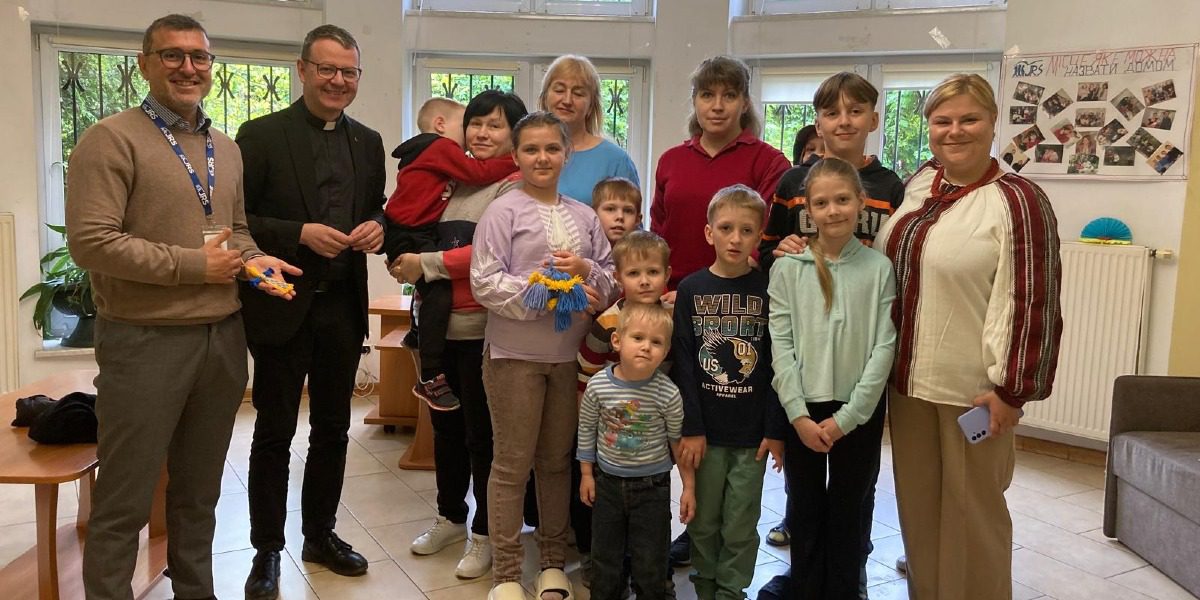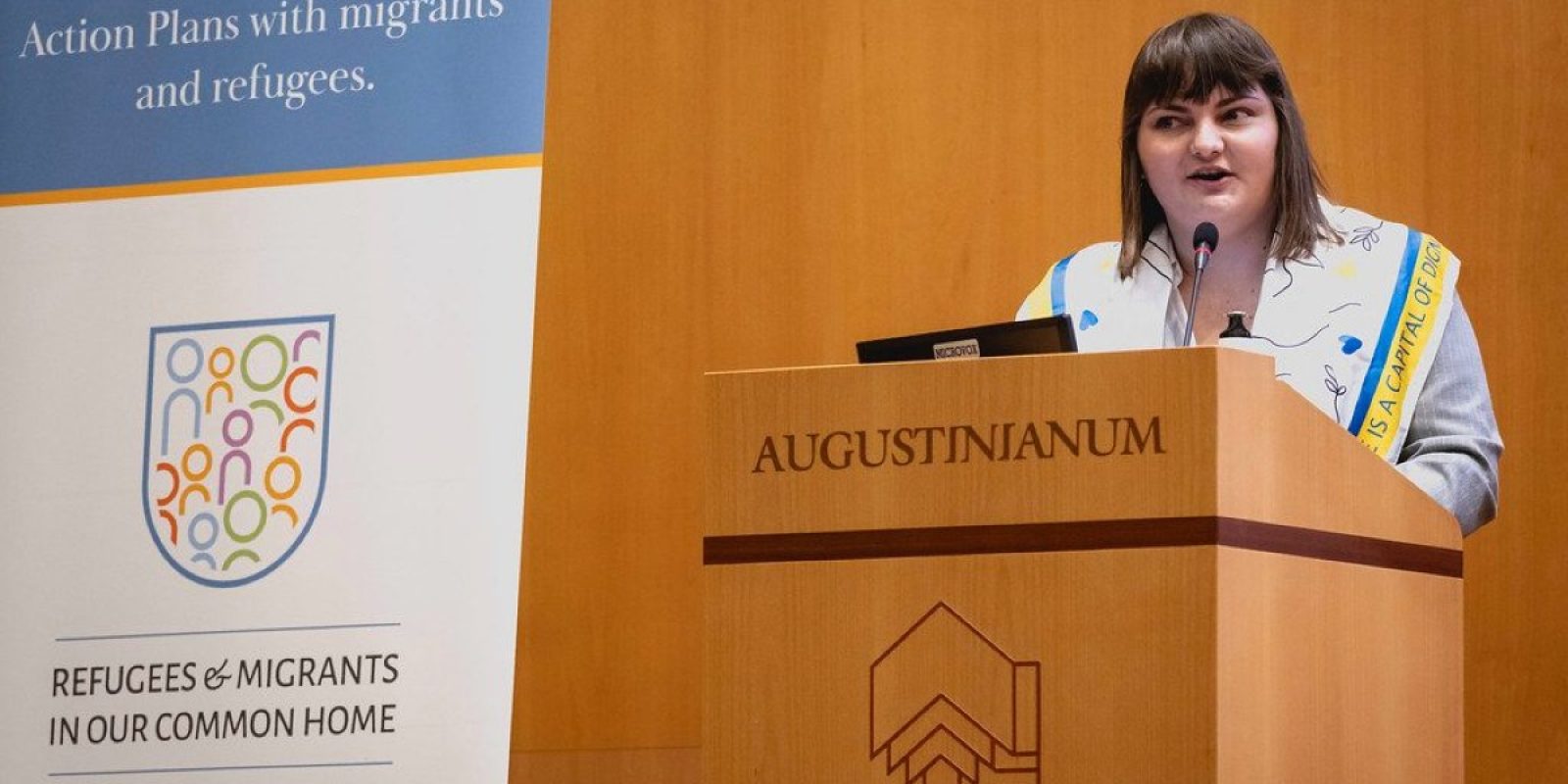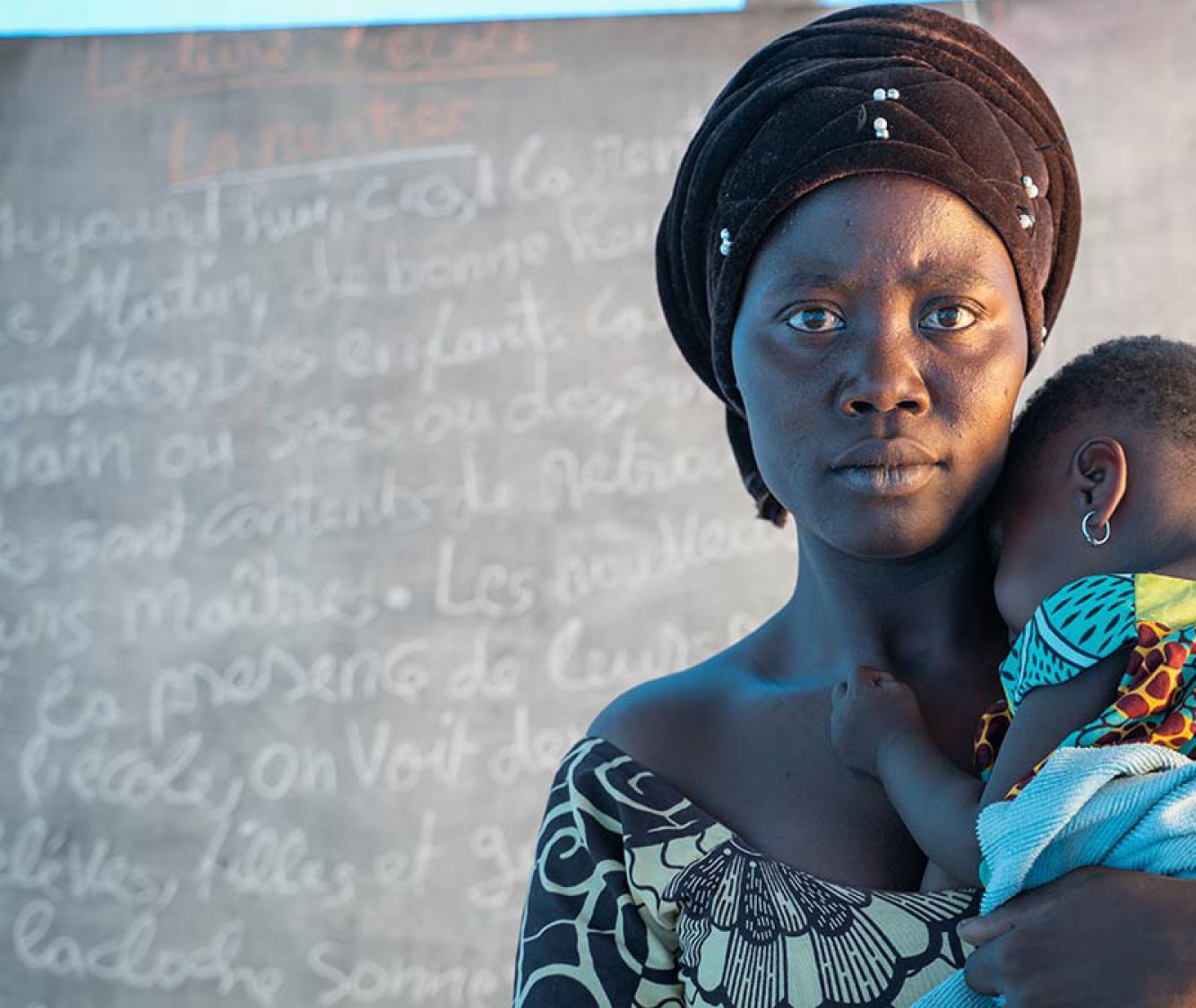At school among the bombs: a witness account from Ukraine
11 June 2024|Angelo Pittaluga, JRS Head of Global Advocacy

The night before I left for Ukraine, I hardly slept. The idea of entering a country at war made me nervous: I was kept awake by images of bombings, by news of military escalation and weapons shipments, by reports of nuclear weapons drills in Russia.
But I wanted to go all the same: to see with my own eyes the projects run by the Jesuit Refugee Service (JRS), the organisation I work for; and to meet colleagues and hear the stories of the people we serve. Every day, we hear talk of geopolitics, spheres of influence and political strategies. My focus was on the people affected, the ones who suffer the most from the war.
We arrived in Lviv in the late morning. The station was beautiful, ancient, and clean. I felt like I was on a day trip to an Italian city. It was strange to see soldiers walking around on the platforms and boarding trains, wearing camouflage uniforms and carrying big backpacks. It looked like the set of a film set in the 1940s. I struggled to get my head around the fact that those people, some of them very young, were leaving for the frontline.
On that first day, a visit to the city’s cemetery brought me face to face with the harsh reality of the situation.
It was a punch to the stomach. An endless expanse of graves and flags as far as the eye could see. I read their birth years – 1981, 1979, 1993, 1987 – and glimpsed the faces of my own friends in their photos. As we walked past row upon row of coffins, we realised that the ones at the top were just the most recent and that the ground was still dug up to make space for new arrivals. There were many people visiting. I felt a deep, silent grief surround me. A young woman caught my attention – she was helping a boy of around four place a small toy on his father’s grave.
The next day we left for Kyiv. We arrived by train early in the morning and were greeted by air-raid sirens warning us of an attack in progress. We quickly made our way down to the underground platform. During the night between the 7 and 8 May, the armed forces of the Russian Federation launched more than 50 ballistic missiles and suicide drones across the entire territory of Ukraine. The Ukrainian air defence system was unable to intercept them all.
We waited for the alarm to end and left the shelter, our hearts beating a little faster than usual.
In Kyiv, we met a lot of people: an ambassador, a military chaplain, colleagues from Caritas Ukraine, and a journalist who was originally from Russia but is now working for Ukrainian television. We gathered a lot of information about the ongoing war.
We then went on to visit Bucha and Irpin. I had read about the massacres that took place there, but I thought that they were further from the capital. It took us just over 20 minutes to arrive. The war was clearly visible in the walls of houses pierced by bullets and explosions, in the burnt-out cars piled up by the roadside, and, most strikingly of all, in the mass graves concealing the bodies of the hundreds who were killed, almost all of them civilians.
Andrey, the young man showing us around, told us that if they had not managed to hold the line here to stop the Russian advance, it would have been the end.
Back in Lviv, we visited the primary school that hosts JRS projects.
JRS works every day to support thousands of displaced families. We distribute food baskets and basic necessities, provide shelter for mothers and children, offer psychological support activities, and run projects to foster inclusion in schools.
Many of the children we met came from frontline regions such as Kharkiv, Luhansk, Donetsk, Zaporizhzhia, Kherson, and Bakhmut. They have experienced the horrors of war, and lost friends and relatives, often parents. They are in urgent need of psychological support.
We visited a fourth-grade class and I felt shaken, because my daughter is in the same grade. The JRS psychologist was conducting a therapeutic activity, using cards from a game called Dixit. My daughter and I love that game. One child in particular reminded me of her.
Although Lviv is less dangerous than the frontline, it is not immune to Russian attacks, and the JRS primary school had already been hit by a missile. Every time the alarm sounded, the children would go down to the air-raid shelters and continue their lessons underground, sometimes for the whole day. As we visited the temporary shelters that doubled as classrooms, I again felt an overwhelming feeling in the pit of my stomach. We walked slowly through these dimly-lit rooms, with their damp-stained walls, low ceilings, rusty desks and chairs. There was a musty smell. A few colourful drawings by the children had been hung on the walls in a desperate attempt to brighten the atmosphere. They failed to do so.
I struggled to accept that this was real. It felt like I was visiting a WW2 Museum. The teacher was explaining to the children what they should do when the alarm sounded: form a line and go down into the shelter, sit down, wait for the siren to stop, remain calm, and don’t be afraid. It sounded like the kind of instructions that a museum tour guide might relay. Or one of the stories my grandmother used to tell me about the bombing of Cantore Street in Genoa. It was hard to get my head around what those children were experiencing, just a few hours flight away.
When we went back into the fourth-grade classroom to say goodbye, the little girl who looked like my daughter smiled at me.
*this article was originally published in Il Secolo XIX.


